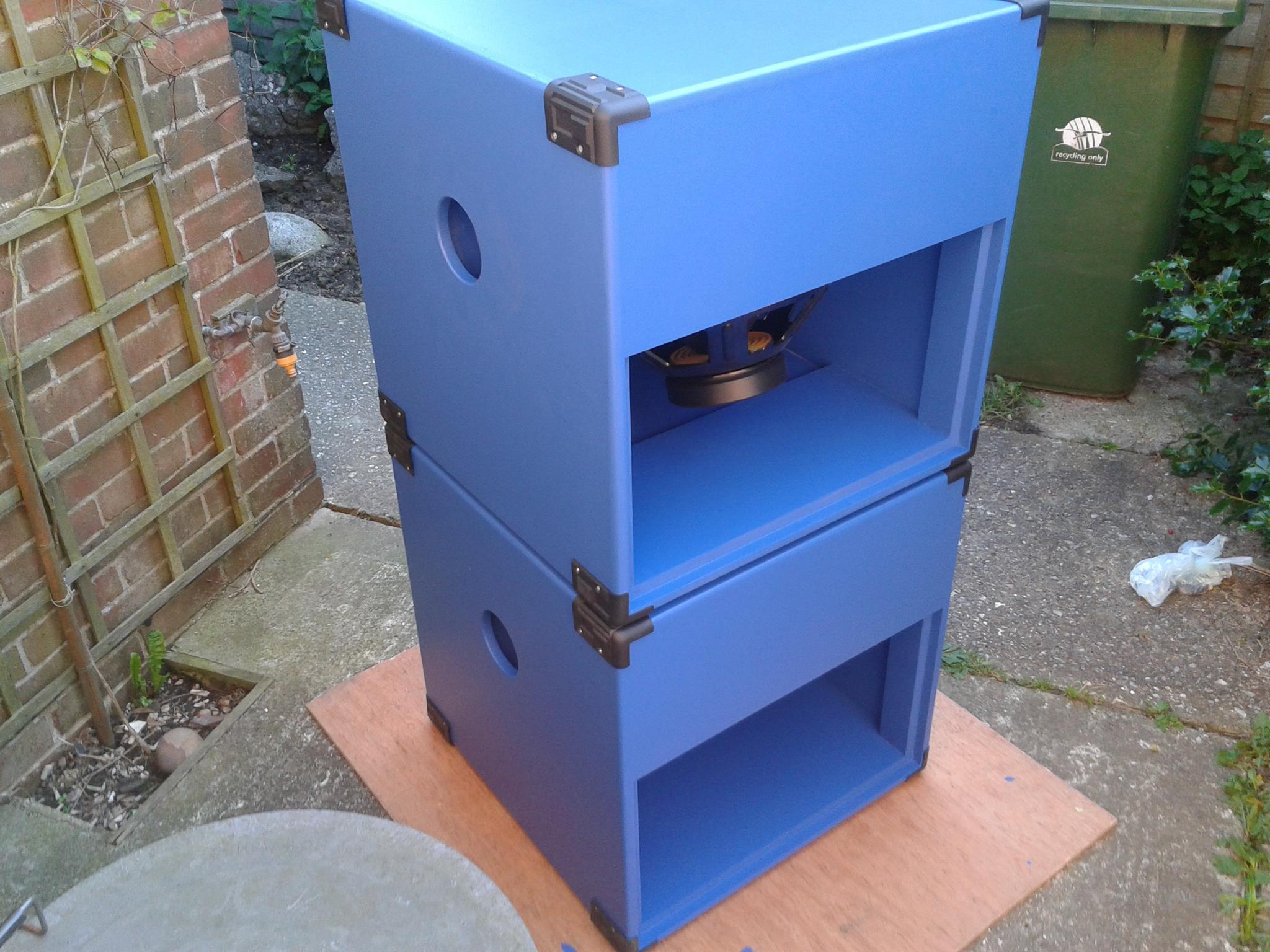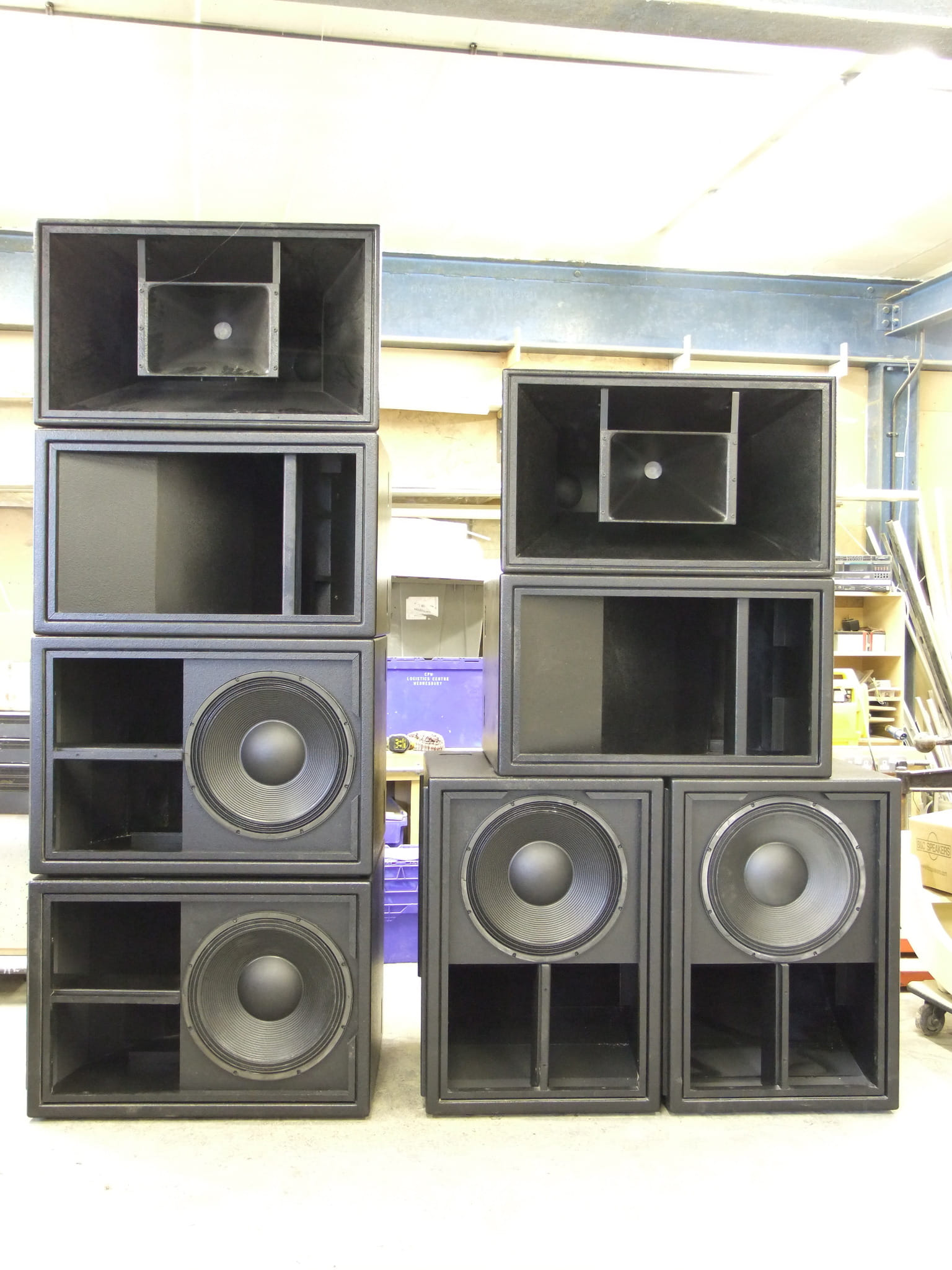- Posts: 116
- Thank you received: 5
Comp Drivers,xovers and Amps
- anjmoor
-
 Topic Author
Topic Author
- Offline
- Premium Member
-

Less
More
12 years 6 months ago #20068
by anjmoor
Comp Drivers,xovers and Amps was created by anjmoor
After a search of the internet I am finding a lack of info regards Compression drivers used with active xovers and amps to power them.
I know there is a wealth of knowledge here at freespeakerplans and that the forum has slowed with new posts and felt that this is a subject not widely covered in the forums.
Would it be possible for anyone to enlighten some of us to the ins and outs of using comp drivers without passive xovers and whether passive xover boards actually protect cd's when used in conjunction with 12" drivers in a mid top box as there are often high wattage 12" drivers used in conjunction with 60 watt+ cd's?
And maybe give us unknowledgable enthusiasts the do's and dont's of using cd's with active xovers?
I know there is a wealth of knowledge here at freespeakerplans and that the forum has slowed with new posts and felt that this is a subject not widely covered in the forums.
Would it be possible for anyone to enlighten some of us to the ins and outs of using comp drivers without passive xovers and whether passive xover boards actually protect cd's when used in conjunction with 12" drivers in a mid top box as there are often high wattage 12" drivers used in conjunction with 60 watt+ cd's?
And maybe give us unknowledgable enthusiasts the do's and dont's of using cd's with active xovers?
Please Log in or Create an account to join the conversation.
- tony.a.s.s.
-

- Offline
- Moderator
-

Less
More
- Posts: 1344
- Thank you received: 12
12 years 6 months ago #20075
by tony.a.s.s.
Peace and goodwill to all speaker builders
Replied by tony.a.s.s. on topic Re: Comp Drivers,xovers and Amps
Many years ago, it wouldn't have been thinkable to use passive x\o's with large systems because of the low power handling capacity of the components in the x/o. Today it is different and in simple two or three way systems passive x\o's can be used to good effect. You have only to listen to some high end Hi Fi to hear how pure passive x\o's can be. However, there isn't the versatility you get with an active system which includes a modern day speaker management system. Not only can you tailor your x/o, you can time align the system.
It is true that a passive will offer some protection for the Compression driver, because it will only let a certain percentage of the power through, but with an active x\o you can choose you slopes and set limiters for protection.
Although some might think it unnecessary to use active x\o's in some situations, technically there isn't one reason why an active system cant be used in any situation.
When deciding which way to go, just try to think how the big boys do it, and although some of that equipment might be out of the price range, these days, there are good cheaper alternatives on the market, and it's this side of the market that improves all the time.
Whatever speaker components you buy, there will always be a manufacturers spec sheet. So that is your starting point, and the beauty of the LMS is that it is infinitely variable. So the world is your Lobster.
It is true that a passive will offer some protection for the Compression driver, because it will only let a certain percentage of the power through, but with an active x\o you can choose you slopes and set limiters for protection.
Although some might think it unnecessary to use active x\o's in some situations, technically there isn't one reason why an active system cant be used in any situation.
When deciding which way to go, just try to think how the big boys do it, and although some of that equipment might be out of the price range, these days, there are good cheaper alternatives on the market, and it's this side of the market that improves all the time.
Whatever speaker components you buy, there will always be a manufacturers spec sheet. So that is your starting point, and the beauty of the LMS is that it is infinitely variable. So the world is your Lobster.
Peace and goodwill to all speaker builders
Please Log in or Create an account to join the conversation.
- Tony Wilkes
-

- Offline
- Elite Member
-

Less
More
- Posts: 273
- Thank you received: 3
12 years 6 months ago - 12 years 6 months ago #20081
by Tony Wilkes
Replied by Tony Wilkes on topic Re: Comp Drivers,xovers and Amps
Totally agree with Tony on this one, using an LMS is just so flexible it makes sense on almost all systems. Even my little system with just a 25w comp handling >2000 hz is fully active.
As a matter of interest the comp never gets used with amps capable of less that 250w into its impedance and because of the limiters in the LMS never had an issue and I do not use blocking caps neither
Tony W
As a matter of interest the comp never gets used with amps capable of less that 250w into its impedance and because of the limiters in the LMS never had an issue and I do not use blocking caps neither
Tony W
Last edit: 12 years 6 months ago by Tony Wilkes.
Please Log in or Create an account to join the conversation.
- anjmoor
-
 Topic Author
Topic Author
- Offline
- Premium Member
-

Less
More
- Posts: 116
- Thank you received: 5
12 years 6 months ago #20082
by anjmoor
Replied by anjmoor on topic Re: Comp Drivers,xovers and Amps
Thanks guys this is for the most part a quick and easy answer to questions that arise, Tony as concise as ever.
With regards to compression driver handling and amps used for powering them in an active set up without limiters, for example: you have a pair of tops with 60watt Comp drivers for hi freq would you still allow a small headroom in amp size or would you conceive this to be a dangerous way to play?
With regards to compression driver handling and amps used for powering them in an active set up without limiters, for example: you have a pair of tops with 60watt Comp drivers for hi freq would you still allow a small headroom in amp size or would you conceive this to be a dangerous way to play?
Please Log in or Create an account to join the conversation.
- tony.a.s.s.
-

- Offline
- Moderator
-

Less
More
- Posts: 1344
- Thank you received: 12
12 years 5 months ago #20289
by tony.a.s.s.
Peace and goodwill to all speaker builders
Replied by tony.a.s.s. on topic Re: Comp Drivers,xovers and Amps
As always, control is the name of the game. I've only just picked this up again, so you may have come to decisions already. Headroom is important whatever the component. I use the Matrix 800's on my top end with no problems, and the beauty of the LMS is that you can have the amp flat out and control the input level. Job Done.
Peace and goodwill to all speaker builders
Please Log in or Create an account to join the conversation.
- anjmoor
-
 Topic Author
Topic Author
- Offline
- Premium Member
-

Less
More
- Posts: 116
- Thank you received: 5
12 years 5 months ago #20297
by anjmoor
Replied by anjmoor on topic Re: Comp Drivers,xovers and Amps
Over the last few weeks I have built one of Rog,s X15's to original specs with a view to find newer existing drivers that work well in the cab, the comp driver and the option of going with or without a passive crossover is still in my mind, I am looking at chopping in my 2-3 way active x-over and either invest in 2 3-4 way actives or go berry ultradrive way , Cant believe I just donated 500 squids to my kids kayak fund when it was meant for speaker toys lol.
Please Log in or Create an account to join the conversation.
Time to create page: 0.460 seconds